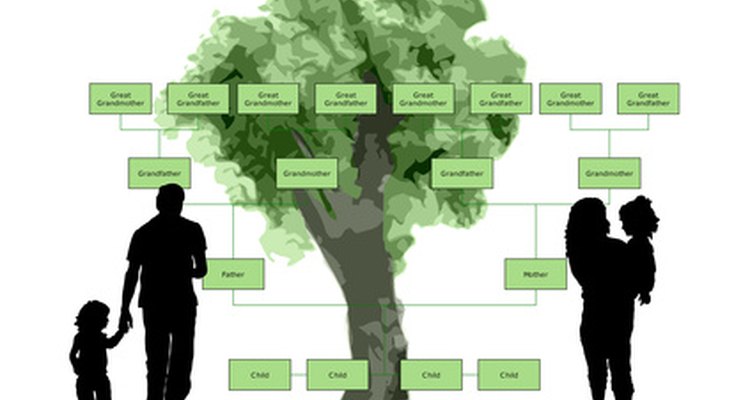
Family trees can be a very basic outline of your family’s genealogy, or they can be pedigree family trees that follow strict rules and include many details. Basic family trees have very few rules. You can set up the tree largely as you choose. Pedigree trees use specific symbols to indicate family relationships and follow specific rules because they are used by medical professionals to assess a person’s family medical history.
Hierarchy
Even basic family trees typically abide by one basic rule: the tree is set up as a hierarchy. Whether you place the current generation at the bottom or top of the tree is up to you. Place each generation in a unique horizontal row. For example, if you begin the tree by placing grandparents at the top, place their children on the line below and their grandchildren two lines below. Place a married man and woman beside one another and note any children directly below the couple. This hierarchy lets you easily see the relationships and different generations.
Gender Symbols
In pedigree family trees, each gender has a specific symbol. Squares represent the males in the family, and circles represent the females. A diamond denotes a family member whose gender is unknown. If a family member is pregnant, mark her name with a “P.”
Relationship Symbols
Pedigree family trees have symbols for many types of relationships. A dashed line and brackets around a person means he is adopted. Relationship symbols are important when you create a tree to trace family medical history. Obviously, an adopted person would not be a factor in a family’s medical history. A diagonal line through a name indicates that the person passed away. A small triangle indicates a miscarriage or other type of pregnancy loss.
Accuracy
Accuracy is important in creating a family tree that provides useful information. It's better to leave a space blank than fill it with inaccurate or assumed information. For example, if you don't know whether your grandfather had siblings, don't arbitrarily add in spaces for siblings, assuming that they existed.
Keep It
While not a hard and fast rule, it is a good idea to keep the family tree once you create it. As each new generation comes along, you may find it harder and harder to fill in family members from several generations prior. If a family member has put in the work to create the family tree, make sure to keep it intact so the family can pass it down to future generations.
Related Articles

What Are the Genogram Symbols?

How to Find Twins on Pedigree Charts

How to Construct a Kinship Diagram

How to Draw a Family Tree When There Is ...

How to Create a Family Tree That ...

How to Make a Genogram Chart
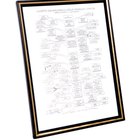
How to Make a Free Genogram
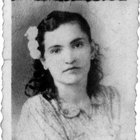
How to Do a Genogram
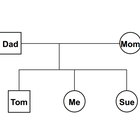
How to Draw Genograms

How to Make a Family Tree With Ex ...

Genograms & Ecomaps

How to Download Free Genealogy ...

How to Make a Family Tree Using a Free ...
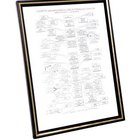
How to Give a Written Analysis of a ...
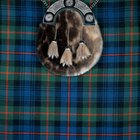
How to Figure Out My Scottish Clan

How to Find Ancestry in Singapore
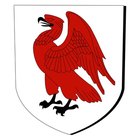
How to Create a Family Shield

The Standard Size for Wedding ...

How to Trace the History of a Name

How to Tell If You Have Italian Ancestry